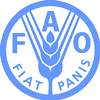 |
|||||||||
|
|||||||||||||||||||
|
|
Bird
Flu Could Strike Again in India, FAO Warns India is to be commended for its successful efforts to control
the recent worst-ever outbreak of highly pathogenic avian influenza
in the state of West Bengal, FAO said today. The agency warned,
however, that intensive surveillance should continue in high-risk
areas as the possibility of new outbreaks remains high.
“Intensive culling in the predominantly backyard poultry sector appears to have stopped the disease in its tracks,” said FAO veterinary expert Mohinder Oberoi after a recent field trip to the affected areas. “The political and financial commitment from the government of India and the state of Bengal to stamp out the disease was instrumental in this success. Public awareness campaigns, a strong command chain from districts to villages, compensation payments and an effective collaboration between animal and human health departments at field level, have been the key factors for the success,” Oberoi said. No new disease outbreaks have been discovered since 2 February 2008. FAO’s Chief Veterinary Officer Joseph Domenech urged to maintain intensive surveillance in high risk areas as the possibility of new outbreaks remains high. “The virus could still be present in the environment despite heavy slaughtering and extensive disinfection of affected areas, or it could be reintroduced from other countries,” he said. In order to achieve rapid control, prevent virus spread to other states and to avoid the risk of human infection the government of India had to cull over 3.9 million chickens and ducks, mainly belonging to poor backyard poultry farmers. The socio-economic impact of this control campaign should be urgently assessed in order to better define and apply the necessary mitigation measures regarding the negative impacts of massive culling on poor small holders, FAO said. Live bird markets, migration of wild birds and transportation routes of birds and poultry products should be mapped to better understand and control the spread of the disease. Public awareness campaigns should continue over the next months introducing rural communities to safe poultry production and basic biosecurity measures with the ultimate goal of reducing the risk of human infections. The recent outbreak of avian influenza in West Bengal, and the ongoing spread of the disease in Bangladesh require close collaboration between affected countries, FAO said. FAO, in collaboration with the World Organisation for Animal Health (OIE), has invited India, Bangladesh, Nepal, Bhutan and Myanmar to participate in a regional meeting to better coordinate avian influenza control campaigns. The Government of Nepal has agreed to host the meeting in Kathmandu.
|
||||||||||||||||||

|
|
||||||||||||||||||
| home | agri-services | pedigree
pen | news | dairy | beef | machinery property | organisations | site map |
|||||||||||||||||||


